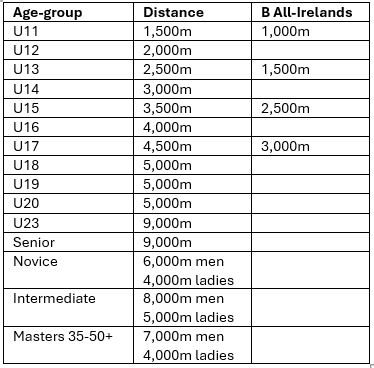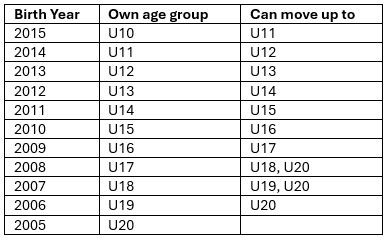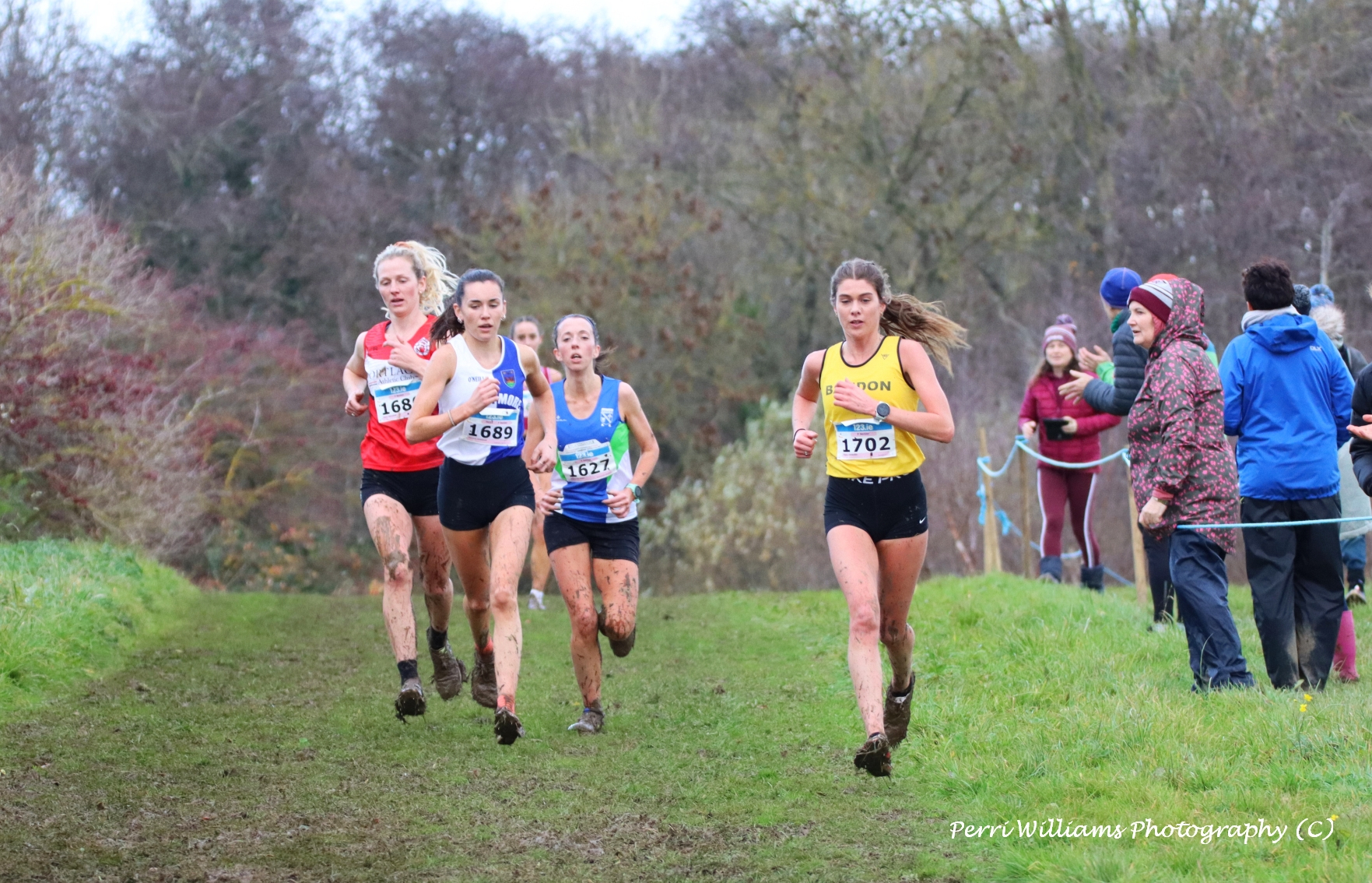by Perri Williams
The Cross-Country Championship seasons kicks starts this Sunday in most counties, with the first of the county championship, for juveniles this is typically the uneven ages. Over the coming few months championship races will be run for juveniles, seniors, novices and all sorts of other categories. If you are new to Cross-country, you may look upon the whole set-up with complete bewilderment and get confused with information that many of us old timers take for granted. Ready to learn more? Read through this article an unravel the mysteries of Cross-country running in Ireland.
Cross-Country is fun.
Cross Country is fun or so we are told! It is a team sport run over grassy terrain and not to be confused with “to hell and back”. Children love to run in fields and get mucky. Some adults do too. So do encourage your child or loved one to take part. It is the purest form of strength and conditioning. If you like it, so will your child. So remain positive. For masters’ runners, running on grass is far better for your body than running on the roads. Teams are an important element of cross-country running. Club teams have four members to score (except u19 which has three). Scores are based on finishing positions. Usually 1st get 1 point, 2nd gets 2 points and so on. EVERYONE gets a point. So if you finish in 79th place you get 79 points. It is the lowest scoring team that wins. We will be publishing more guidance on teams at a later point.
It’s cold, wet and usually very muddy. Fact or Fiction?
Fiction at its best. It is not always muddy or wet, in fact there’s a huge amount of variety and the terms wet and muddy serve as a stereotypical myth. Course can be flat, hilly, muddy, firm, twisty, short, long – and different runners are suited to different courses, in essence there should be something for everyone. There are probably more dry days than wet days too. The real benefit is the day’s activities are also over relatively quickly – in a few hours in fact, so parents, loved ones and athletes don’t have to hang around all day waiting for heats and finals. AND the athletes get a real buzz from having raced.
Remember while the rigours of the race might seem torture while you are running, the memories of the achievements far outweigh those temporary moments. It is one of those things that is a rite of passage from one season to the next with enormous benefits in terms of strength and stamina.
Specific advice to parents and coaches
Parents, please leave your kids to their coach. At the younger ages, this is the best policy. They will be fine. Honestly. They only cry when you are there.
Coaches, you won't be starting the race, so keep away from the action at the start line and leave the kids to the starter. There is plenty of action at the starts and you do not need to be part of it. Your job has already been done.
For everyone - medals are earned not given to all. This teaches athletes the valuable life skill of having goals and trying harder.
When is the season?
The seasons starts in September and run through to Christmas. There will be some races from January to March, typically the secondary school’s competitions, Juvenile B Championships and All-Ireland Intermediate.
What are the race distances?
For parents: do not place an emphasis on the distance to your child. Emphasize participation. You might not be able to run 2k but your kids are very capable, I assure you. For adults: you are old enough and wise enough to know your capabilities and how to pace yourself. Run wisely.
The table below details the distance per age category.

This year at the All-Irelands some distances will be reduced to match those of the European Cross-Country.
Age Groups
The official championship age groups begin at u11 and run right through to u19 for juveniles. Though counties and some provinces run competitions for u9s and 10s too. Athletes run in their own age group and can move up one age. This is to help form teams. To simplify things refer to the table below;

What if I am new to Cross-Country?
This is the beauty of cross-county running, abilities of all kinds run in one race. Being new or an old hat at cross country running does not matter. For juveniles there is a qualification system. Over 19 there is direct entry. Note: There is some direct entry for older juveniles please see your club coaches for guidance on this.
What gear do I need?
As with all Athletics Ireland based competitions it is important that athletes of all ages wear their club singlet. County GAA jerseys are not club singlets – no matter how similar their colours are. After all you would not wear your athletic club singlet to a GAA match that you have to play. And Man United, Aresnal or Liverpool are not athletic clubs.
And do bring warm clothes for afterwards. It is essential to keep warm in the autumn or winter months. While parents might like to grab a cup of coffee, we can assure you that young kids might prefer body warmers, hoodies and warm rain proof coats.
Wellies and raincoats are an essential part of cross-country attire. Don't leave home without them. Guicci footwear can wait for the right occasion.
There may be lots of slipping and sliding so you will need running spikes with the actual spikes themselves being 9mm or 12mm in length. Runners are perfectly fine for younger kids. Especially the u8 to u10s. Anything pointy can be a weapon for this age. The muddier it is the longer the spike size. Shorter track spikes may come with your shoes, so may sure you check in advance of the season that you have the cross-country ones. A good tip too is to add Vaseline around the screws before you screw them in. It helps make it easier to remove them. And saves you endless hours of frustration twisting around a vice grip.
Qualification
The ultimate aim is to get to the All-Ireland Championships. For juveniles this is not a simple matter of entering the race and rocking up to the starting line. An athlete has to go through a series of qualifications races – from counties, to provincial to national (All-Irelands). For u20s and upwards you do not have to go through this qualification ladder and can simply enter any race you want.
At the base of the championship ladder is the county championships. Most counties run these and they are an ideal way to give your race form some test. For juveniles, especially the younger ones, it is a good idea to start here. For many this may be as far as they go. In theory you do not have to qualify for the provincial Championships (of which there are five; Munster, Leinster, Connaught, Ulster and Dublin). Clubs can enter athletes either as individuals or teams straight into these. Thus, if you happen to be sick or injured or miss the counties for one reason or another, you can still move onto the next stage. Unless your club happens to have a rule that restricts you.
To get from the provincial championships to the All-Irelands, you must qualify. The top twelve individuals from each province will go through automatically. They will race the All-Irelands as part of the provincial team. First four club teams in the 11-19 age group, all must qualify from the Regional Cross Country Championships. Three teams each from Munster, Ulster, Connaught, four from Leinster and one Team from the Region of Dublin qualify for County Teams. Between individual, club and county, this allows for a vast array of possible qualification avenues.
In the 17-19 age groups individual open entry will apply provided the athlete has entered in the Regional Cross Country Championships. There is no open entry for Club or County Juvenile teams.
Terminology
The cross-country dictionary consists of just a few small terms. Firstly, there are the simple terms “evens” and “unevens”. These refer to juvenile age-groups. The even ages are held on one day and consist traditionally of u12, 14, 16 and 18. The uneven ages refer to u11,13,15, 17 and 19. The chart under the section age-groups will help you figure out what age the athlete should be racing in. Thus, you will run in your age on one day and out of your age on the next.
Chute or Pens: Unlike track, where athletes start from the lines marked on the track, in cross-country athletes start in pens or chutes. These are small linear spaces where they line up possibly two abreast and shove and push to keep their places. It is bedlam but designed to help keep kids on their feet and safe. Be tough and strong and stand your ground. Usually the faster athletes head to the front. Athletes also run into a chute at the finish. This helps preserve their finishing positions. There can be over 200 athletes in some races, so you can understand why this efficiency was created.
